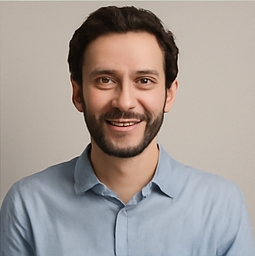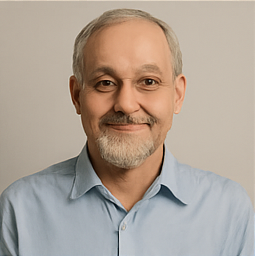Navigating the Startup Landscape: The Middle Path










2025-04-07T08:42:43Z

Hello everyone! Iâm Matt, and I'm excited to share my journey with you through this inaugural post on Substack as a new content creator. As a first-time entrepreneur, I founded a company named Vizzly, and I can proudly say that I exited in under three years by selling it to WPP, the largest advertising organization in the world. Looking back, my path was filled with challenges and valuable lessons that I believe will resonate with many aspiring entrepreneurs.
A few months after establishing Vizzly, we got accepted into Y-Combinator, one of the most prestigious startup accelerators globally. I spent four intense months in San Francisco, diving deep into its vibrant tech culture and learning from a network of incredibly smart individuals. While I hold fond memories of my time in the Bay Area, I never fully embraced the all-or-nothing mentality often associated with startups.
It's important to mention that after attending Demo Dayâa pivotal event for startupsâwe aimed to raise a significant amount of capital, but we didn't achieve our goal. This experience was initially disheartening, as I perceived fundraising as a measure of validation for our business. However, in hindsight, I realized that this setback was ultimately a blessing in disguise.
Not securing the full funding pushed us to adopt a revenue-centric approach. This shift in focus was transformative, allowing us to explore smaller acquisition opportunities. Given our modest preference stackâwhich I will discuss laterâeven a minor deal could yield life-changing rewards for the founding team.
As I write this, I find myself teeming with thoughts and insights, and I look forward to unpacking them in future posts. For now, let's dive into a concept I refer to as the 'missing middle path' in the startup ecosystem.
In my observations on LinkedIn, Iâve noticed two prevailing narratives dominating the B2B SaaS landscape. On one side, thereâs the venture capital (VC) route, characterized by an aggressive strategy of 'go big or go home.' This approach encourages startups to push for extensive fundraising rounds, often seeking secondary investments at Series A or B stages. On the other side, we have the Bootstrapper route, where founders build sustainable businesses on a shoestring budget, focusing on generating organic cash flow and dividends.
However, what is frequently overlooked is a third option: a middle-ground strategy where founders raise a relatively small amount of capitalâtypically less than $1 millionâwhile retaining over 90% of their equity. This approach allows entrepreneurs to avoid burdensome board seats while prioritizing profitability and strong asset growth, all without draining their personal finances or spending a decade in the bootstrap trenches.
The reason this middle path isn't more widely discussed is that it often contradicts the founder-focused model preferred by venture capitalists, making it a somewhat contentious viewpoint. In fact, if you pitched this strategy to a VC, you might find yourself ghosted faster than their last awkward Tinder date.
To provide some context, the VC model is predicated on the idea that the top 3% of investments are responsible for returning the entire fund and more. Therefore, if your goal is to achieve a $10 million exit, most VCs would likely pass on your proposal. The common belief is that success and returns tend to increase with higher levels of funding, which is why VCs advocate for relentless fundraising. This dynamic creates a preference stack, meaning investors are repaid first, effectively encumbering the founders with a form of debt.
For those unfamiliar with the concept of a preference stack, it refers to the hierarchy of payments made to different investors in the event of a startup sale or liquidation. It's not unusual to see headlines in major publications like TechCrunch celebrating a startup sale for $40 million. Yet, behind the scenes, that company might have raised $30 million and spent years grinding away, only to find themselves with a meager share of a deal that was 10% cash and 90% equity exchange. This means the founders could end up with significantly diluted equity that may take four years to fully vest.
This hypothetical scenario illustrates the reality that many founders faceâthe trade-off between time invested and the actual returns they receive is often quite modest, especially considering the years of their lives spent building their companies.
While I hold immense respect for those who take the venture routeâgiven the high stakes involvedâI also admire entrepreneurs who bootstrap their way to success. However, the challenge with bootstrapping is that it's not feasible for everyone. Many thriving B2B SaaS companies originated from previous agency work, like Mailchimp, Basecamp, and Lemlist. This connection to a prior business can provide a safety net, but bootstrapping can often be a long and arduous journey.
Now, letâs return to the concept of the missing middle path. This approach, while subjective, presents an optimal blend of potential returns, reasonable time frames for profitability, and minimal financial risk for founders. For the majority of B2B SaaS ventures, securing no more than $1 million in capital should be sufficient to reach product-market fit (PMF), establish a go-to-market (GTM) strategy, and achieve an annual recurring revenue (ARR) figure that makes valuation multiples attractiveâultimately leading to a promising outcome, even after investor payouts.
What many venture capitalists may not divulge is that there exists a golden opportunity window between Pre-Seed and Series A stages, where founders can tap into significant upside potential. This topic is seldom discussed, and too many startups fall into the trap of raising excessive capital, only to find themselves with little to show from a liquidation event, as previously described.
In my case, we stumbled upon this middle path, and I am genuinely grateful for that revelation. However, there are still challenges and important factors to consider, especially regarding how to source your investment. While traditional VCs may not align with this perspective, angel investors often exhibit a more flexible mindset, usually open to reasonable returns of 2-3x.
Ultimately, there are trade-offs to every financing strategy. The crucial part is to have clarity about your values and the outcomes you desire from your entrepreneurial journey. Understanding what you are willing, and perhaps more importantly, unwilling to sacrifice along this path will empower you to make informed decisions about the financing route that best suits your needs.
Key Takeaways:
- A viable middle path exists that doesn't necessitate moonshots or prolonged bootstrapping.
- Thereâs a sweet spot between Pre-Seed and Series A funding stages that can be leveraged for optimal results.
- Know your 'why' and avoid getting entangled in a journey that does not align with your goals and values.
In upcoming posts, fueled by caffeine and inspiration, Iâll delve deeper into topics such as fundraising strategies, mergers and acquisitions (M&A), go-to-market tactics, product-market fit (PMF), and a few other acronyms that have become part of our entrepreneurial vernacular. So stay tuned, and thank you for joining me on this journey! âï¸
 Robert Jackson
Robert Jackson
Source of the news: Substack.com